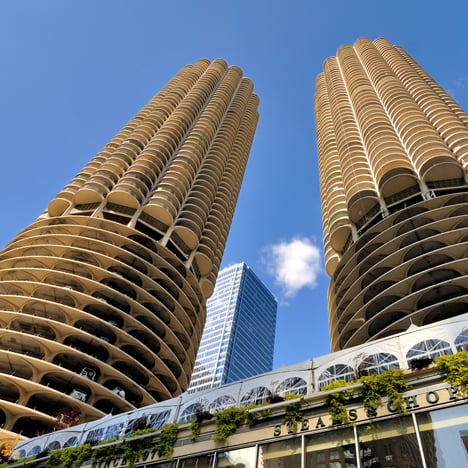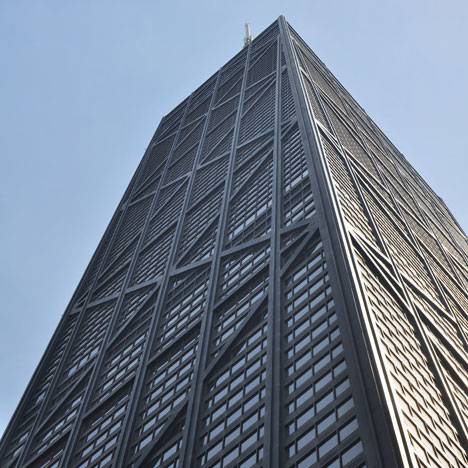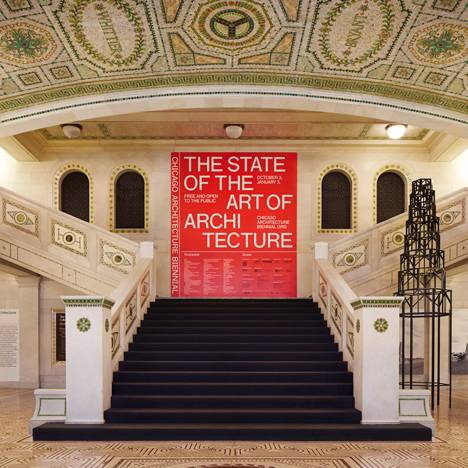"Lack of demand" is holding back Chicago's young architectural talents
Chicago Architecture Biennial 2015: Chicago might be the city that invented contemporary high-rise architecture but lately it has been left standing by New York, Miami and Los Angeles. Is the Windy City stuck in the past or is its first ever architecture biennial a sign that things are changing?
"Chicago is where all the good ideas originally emerged," wrote Zach Mortice in our guide to the city's architectural highlights.
But while Chicago is home to many icons of Modernist architecture – from Bertrand Goldberg's Marina City towers to Mies van der Rohe's IBM Building and S R Crown Hall – in recent decades the city has seen only a handful of projects win international acclaim.
Unlike New York, which is riding on the success of projects like the High Line and the World Trade Center site; Los Angeles, which has seen a surge of avant-garde projects thanks to low rents and big commissions; and Miami, with its rash of starchitect-designed condo towers, Chicago could be seen as the city that got left behind.

Architecture giant SOM, for example, was established in Chicago and designed some of the city's most important buildings, including the Willis Tower and the John Hancock Center. But now the firm focusses the majority of its attention on exporting its expertise abroad.
"This office has done major works for establishing Chicago's presence on the worldwide stage as a place of great architecture," SOM partner Brian Lee told Dezeen. "But the time came when the local commissions didn't meet the aspirations the office had, for lots of different reasons, and it was easier to do work elsewhere."
But Lee said that recently the firm has had a renewed interest in the city. "We've really wanted to be more involved with the city itself, and we've been working smaller projects that we might not usually be expected to be involved with, like a library that we just finished recently," he said.
John Ronan, an established Chicago architect, believes the dominance of long-established firms like SOM and Jahn is part of the problem – it has made it too difficult for emerging studios to find work.
"There's a plentiful supply of young talent, there's just lack of demand," he said. "Unlike on the coasts, we don't have industries that demand design like the fashion and art worlds in New York, or the entertainment industry in LA. Chicago is home to very staid industries like insurance and financial services, and so on."
"So already you are working with a different client base, one that is more conservative and risk averse. Even Mies was 57 before he built his first building here," he added.

Jonathan D Solomon, director of architecture at the School of the Art Institute of Chicago, said the city has moved on from its skyscraper glory years and is now pioneering new approaches to landscape design. "Chicago is again and always the city of the future," he wrote in a recent Dezeen column about his city.
However British architect and Dezeen columnist Sam Jacob disagrees. He said that, despite its amazing architectural legacy, and its abundance of great schools and institutions, the city can feel parochial.
"It's an amazing city but it's in the middle of nowhere and it's f*cking boring," said Jacob, who has been teaching architecture at Chicago's University of Illinois (UIC) for the last four years. "It feels lonely at times."
But Jacob also believes that a new architecture scene has started to emerge that is "really vibrant and exciting", and which needs support from the city's politicians and developers to continue.
"There are lots of really interesting people and firms who are really helping to reinvent the idea of Chicagoist architecture," he said. "The big question is whether, in the brutal landscape of the contemporary American city, they will be given opportunities to implement these ideas, because it is very difficult for architects to get a big break in America."
Luckily for Chicago, Mayor Rahm Emanual also believes architecture is one of the city's biggest strengths and has been pushing forward numerous projects to improve the city's infrastructure.
He was the driving force behind staging the Chicago Architecture Biennial, which opened earlier this month and is the largest exhibition of contemporary architecture in the USA's history. One of the Biennial's two curators is Sarah Herda, who moved from New York to Chicago in 2006 to become director of the influential Graham Foundation.
Herda said there is "a new burst of energy" in Chicago at the moment. "It's been hard for Chicago to live up to past eras, because they were just so forward thinking, and there were so many fast and furious developments, she said.
"Architects are starting to get more projects, and the mayor's commitment to architecture is also making a real difference," she added. "We're seeing a lot of new buildings: a new public library, boathouses, park investments and the 606, which is High Line-esque repurposed infrastructure."
She believes one of the main catalysts for this burst is the incredible array of Chicago institutions supporting contemporary architecture, many led by new voices. These include Solomon, as well as Zoe Ryan at the Art Institute of Chicago, Wiel Arets at the Illinois Institute of Technology, and Robert Somol at UIC.

UIC in particular has been pivotal in cultivating talent. Architect Jimenez Lai founded his studio Bureau Spectacular in Chicago after an invitation from Somol to join the faculty – although he has since relocated to LA.
"When I first signed up to come to Chicago, I had a feeling that I was not only taking a job, but possibly joining a movement," he explained. "I thought that Somol would become instrumental towards a noteworthy chapter in the ongoing history of architecture in Chicago and the United States at large, and I believe I was right."
One of the most important players in Chicago's renewed architectural scene is Jeanne Gang. Her firm Studio Gang has brought skyscrapers back into conversation, with both the Aqua Tower completed in 2009 and the proposed Vista Residences. She has also been pivotal in the mayor's plans to regenerate the city's riverside, with projects including the WMS Boathouse.
Jesse Seegers, an editor working with Columbia University's Graduate School of Architecture, said Gang has set the perfect example of a young designer who went on to make it among the city's bigger firms.
"There are at least 20 potential Jeanne Gangs working and teaching in Chicago right now," he told Dezeen. "There has been a very interesting homegrown scene in Chicago in the past five years, now it's just a matter of connecting them to projects, clients and commissions."
Seegers agrees that the city must continue to support young studios if it wants to maintain its status as a hub for avant-garde architecture. "If it's all AECOM, SOM and the like, that would be a terrible waste," he added.
Images of Chicago architecture are courtesy of Shutterstock. Photo of the Biennial is by Steve Hall/Hedrich Blessing.